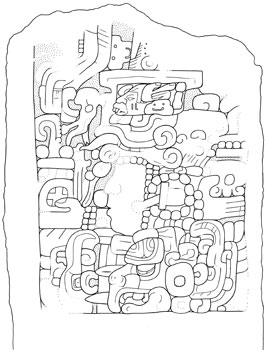 New York Times
New York Times: "It was back in 1964, outside Cairo, near the famous Step Pyramid in the necropolis of Saqqara and a short drive from the Sphinx and the breathtaking pyramids at Giza. The newfound tomb yielded no royal mummies or dazzling jewels. But the explorers stopped in their tracks when the light of their kerosene lamp shined on the wall art in the most sacred chamber.
There, carved in stone, were the images of two men embracing. Their names were inscribed above: Niankhkhnum and Khnumhotep. Though not of the nobility, they were highly esteemed in the palace as the chief manicurists of the king, sometime from 2380 to 2320 B.C., in the time known as the fifth dynasty of the Old Kingdom. Grooming the king was an honored occupation.
Archaeologists were taken aback. It was extremely rare in ancient Egypt for an elite tomb to be shared by two men of apparently equal standing. The usual practice was for such mortuary temples to be the resting place of one prominent man, his wife and children.
And it was most unusual for a couple of the same sex to be depicted locked in an embrace. In other scenes, they are also shown holding hands and nose-kissing, the favored form of kissing in ancient Egypt. What were scholars to make of their intimate relationship?"
Over the years, the tomb's wall art has been subjected to learned analysis, inspiring considerable speculation. One interpretation is that the two men are brothers, probably identical twins, and this may be the earliest known depiction of twins. Another is that the men had a homosexual relationship, a more recent view that has gained support among gay advocates.
Now, an Egyptologist at New York University has stepped into the debate with a third interpretation. He has marshaled circumstantial evidence that the two menmay have been conjoined twins, popularly known as Siamese twins. The expert, David O'Connor, a professor of ancient Egyptian art at the N.Y.U. Institute of Fine Arts, said: "My suggestion is that Niankhkhnum and Khnumhotep were indeed twins, but of a very special sort. They were conjoined twins, and it was this physical peculiarity that prompted the many depictions of them hand-holding or embracing in their tomb-chapel.
Most Egyptologists accept the normal-twins interpretation advanced most prominently by John Baines, an archaeologist at the University of Oxford in England.
And he noted that the gay-couple hypothesis had become the popular idea in the last decade. The gay argument leans on the analogy with depictions of married heterosexual couples in Egyptian art, which was first suggested by Nadine Cherpion, a French archaeologist.
When Dr. O'Connor looked into the matter, he was struck by a comparison of the images of the two men with pictures of Chang and Eng, the famous conjoined twins born in 1811 in Siam. They were seen close together, arm in arm. They and a number of documented conjoined twins also had wives and children and engaged in strenuous activities, much like the hunting and fishing of the two Egyptians.
Their names, Niankhkhnum and Khnumhotep suggest another clue, Dr. O'Connor said. Both names refer to the god Khnum, the deity who fashions the form of a child in the womb. Though not an uncommon part of Egyptian names, in this case it might be a play on words to signify their paired lives.
David Silverman, an Egyptologist at the University of Pennsylvania, and his student Joshua Robinson pointed out to Dr. O'Connor that the name Khnum was also similar to the ancient Egyptian word khenem, which means "to unite" or "be united.""
If you enjoyed this post, never miss out on future posts by following me by email!






